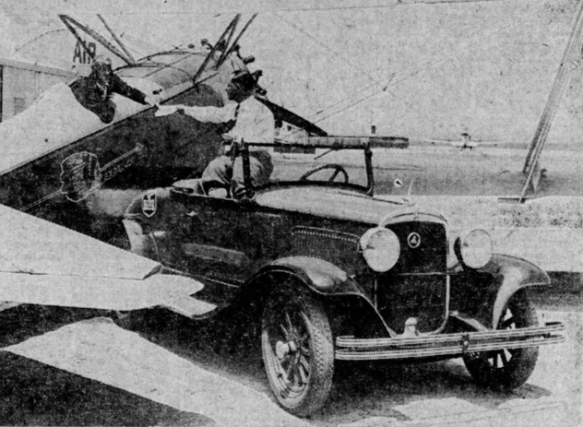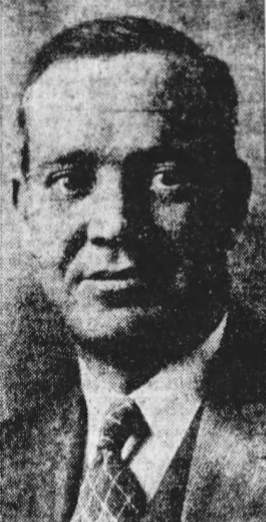
Harry C Smith, the man who chained himself to his car.
On a hot summer’s day in 1929, a young man drove into Detroit accompanied by a motorcycle escort to be greeted at his journey’s end by a large crowd. He was not a movie star, although the reception might have seemed otherwise. Harry C Smith was a chap who had just driven his Plymouth roadster from Los Angeles which, while adventurous on pre-interstate roads, was hardly noteworthy. However, not many drivers – in fact, probably no others at all – undertook such a trip while chained to the steering column of their car…
Harry was a car salesman of some years’ standing, working first for Norman Inc, and then in April 1929 being recruited by the Robert Atherton dealership in Los Angeles, an agency for the new line of Plymouth automobiles, a brand which had been launched the previous year. It seems that Harry lasted just a handful of weeks in that job for, on May 24, 1929, it was announced that he had been appointed as manager of E Allen Test, Inc, in Stockton, California.
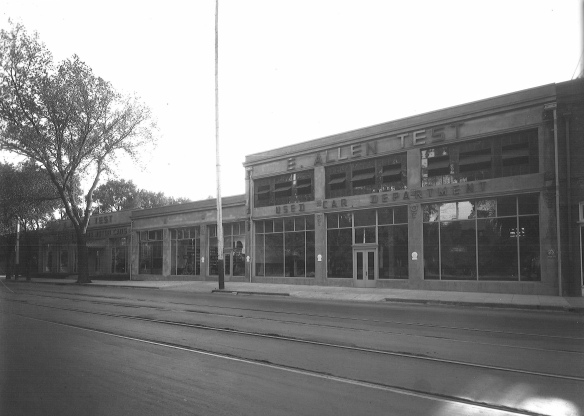
The impressive showrooms of E Allen Test in Stockton, California.
Test had started a Dodge dealership in 1915 after moving from Pennsylvania with his brothers and by this time occupied an impressive facility on El Dorado Street in the city. Harry had worked for Test previously and when E Allen Test decided to embark on a lengthy tour of Europe, he chose Smith to replace his previous sales manager who had left for Los Angeles. Test had, in addition to the Dodge dealership, just acquired the Plymouth franchise for the local area and so young Harry Smith decided to go to Detroit to see the Plymouth plant for himself.
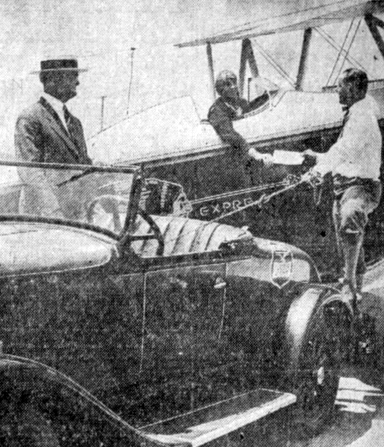
Locked in his leg irons, Harry hands over the key to the Detroit-bound pilot.
However, he also took the opportunity to plan a publicity coup to raise the profile of the fledgling car brand. He attached himself to the steering column of his roadster with leg irons, which Captain AW Gifford of the Los Angeles traffic squad locked. The key was then sent by air mail to Detroit while the captive Harry followed on behind. From contemporary pictures, he had enough chain to perform basic functions along the road like refuelling – it seems that he used Richfield stations although it’s unknown whether he had any sponsorship from the oil company – and this came in handy when he suffered two punctures along the route, not to mention running off the road at one point.
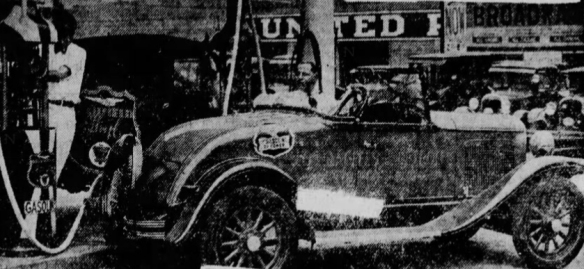 So Harry set off, his route taking him via Salt Lake City, Cheyenne and Omaha and onto Detroit, a total distance of 2735 miles. He arrived some 86 hours and 7 minutes later, a quite remarkable achievement considering the primitive roads and that his roadster averaging 38mph (laudable for the day, but perhaps laughable almost a century on). He was welcomed by A Van der Zee, the general sales manager of the Plymouth Motor Corporation, while an even more welcome face was that of Inspector William Doyle of the Detroit police who had collected the key from the airplane and could now liberate Harry.
So Harry set off, his route taking him via Salt Lake City, Cheyenne and Omaha and onto Detroit, a total distance of 2735 miles. He arrived some 86 hours and 7 minutes later, a quite remarkable achievement considering the primitive roads and that his roadster averaging 38mph (laudable for the day, but perhaps laughable almost a century on). He was welcomed by A Van der Zee, the general sales manager of the Plymouth Motor Corporation, while an even more welcome face was that of Inspector William Doyle of the Detroit police who had collected the key from the airplane and could now liberate Harry.
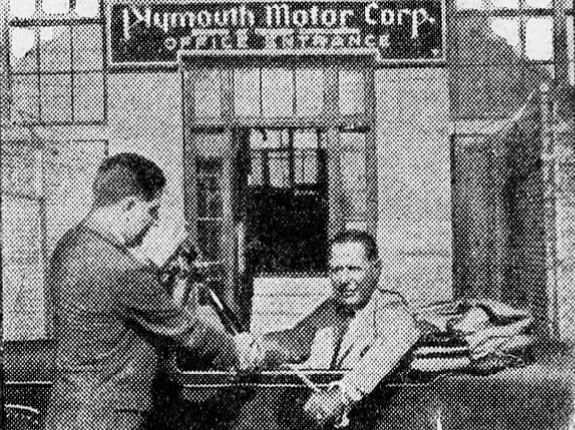
Harry is greeted by Plymouth sales manager, Mr Van der Zee.
A tour of the factory (then the largest single floor structure in the country) followed with Harry exclaiming to the factory managers, “Now that I’ve gotten a better idea of the marvellous new production methods which you employ, the care and precision in manufacturing, I can understand how you produce such a high quality car at so low a price.” While he was extolling the virtues of Plymouth, the factory’s engineers had torn down his roadster to see what effect the long journey had had on the auto. They found it had withstood the trip with no sign of trouble which was just as well as Harry Smith then turned around and drove it all the way back to Los Angeles, saying “I won’t be chained on the trip west, and I won’t drive as fast. The car can stand the grind much better than I can!”
